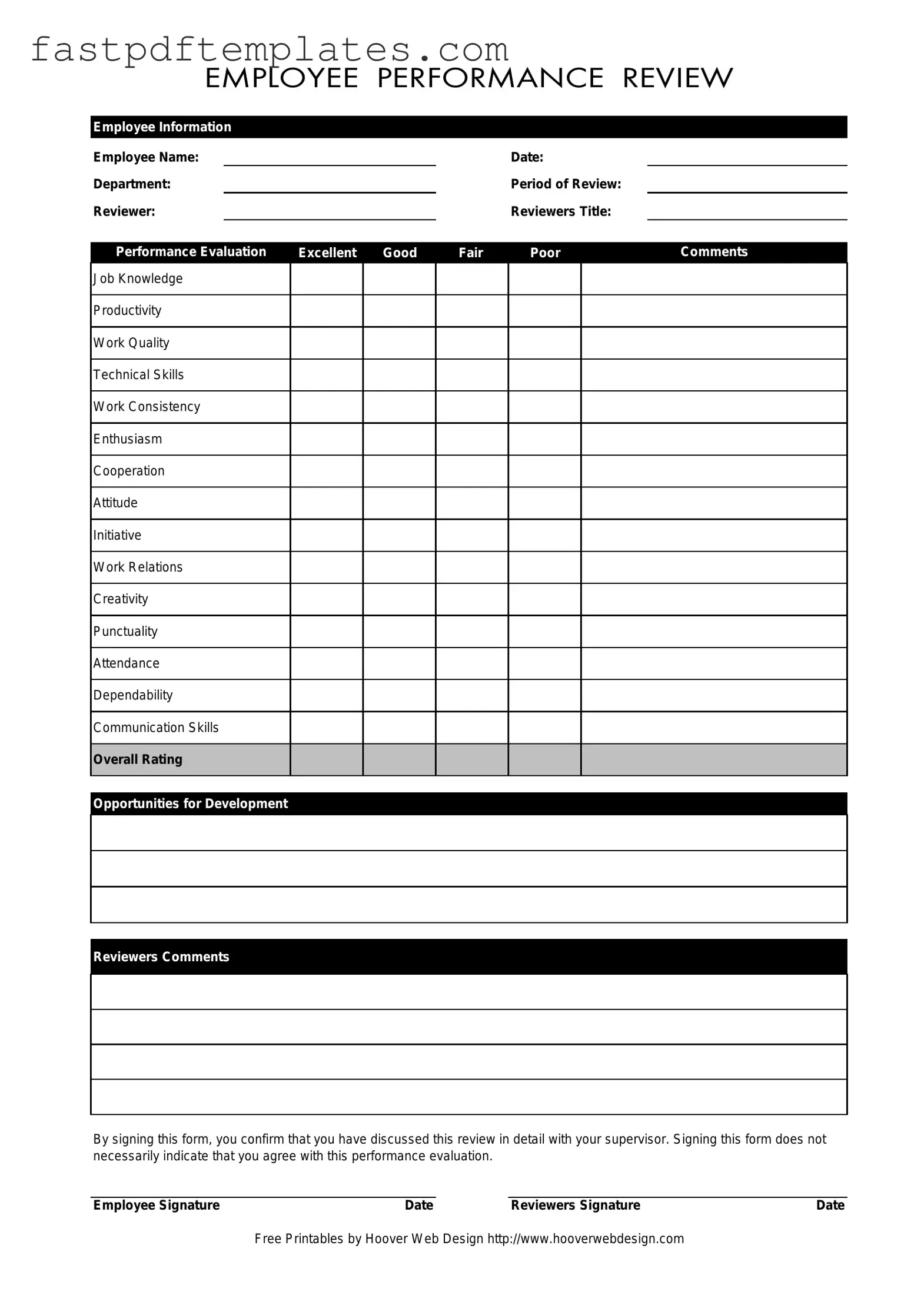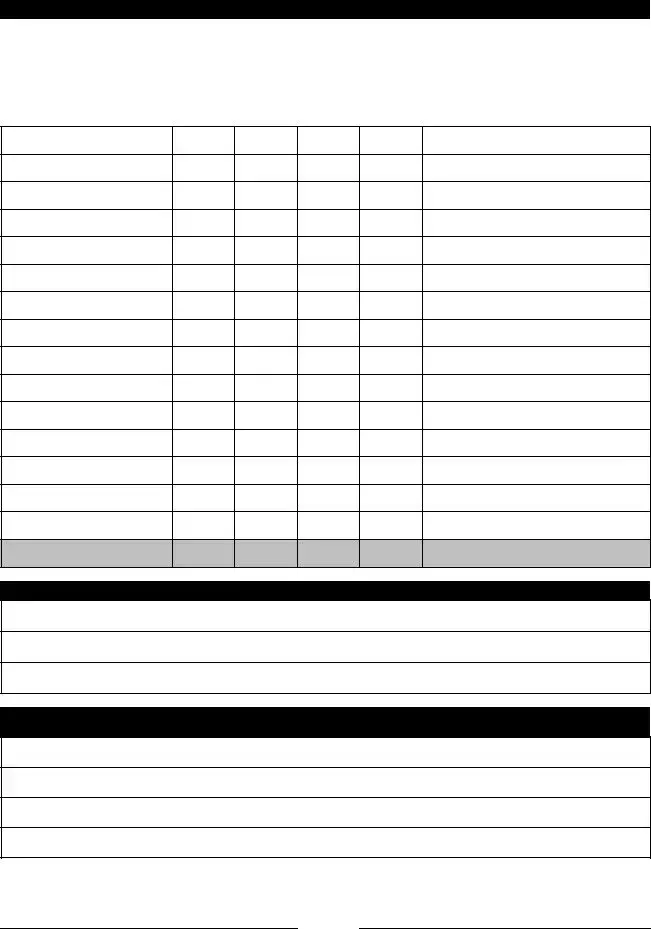The Performance Appraisal form is similar to the Employee form in that both documents are used to evaluate an employee's work performance. They typically include sections for feedback on various competencies, such as job knowledge and communication skills. Both forms require signatures from the employee and the reviewer, indicating that a discussion has taken place regarding the evaluation. The Performance Appraisal form may also provide an overall rating and suggestions for development, similar to the Employee form.
The Self-Evaluation form allows employees to assess their own performance, much like the Employee form. This document encourages reflection on strengths and areas for improvement. Employees provide their own ratings and comments, which can then be compared with the reviewer's evaluation. The inclusion of both perspectives helps create a more comprehensive view of the employee's performance.
The 360-Degree Feedback form gathers input from various sources, including peers, supervisors, and subordinates. This form is similar to the Employee form in that it evaluates multiple aspects of performance. It offers a broader perspective by incorporating feedback from different levels within the organization. The results can highlight strengths and weaknesses in a way that a single review might not capture.
The Job Description form outlines the responsibilities and expectations for a specific role. Like the Employee form, it serves as a reference point for evaluating performance. The Job Description provides criteria against which an employee's work can be measured. Both documents aim to clarify what is expected from the employee and how their performance aligns with those expectations.
The Training Needs Assessment form identifies areas where employees may require additional training. Similar to the Employee form, it focuses on employee development and improvement. This document helps managers pinpoint skills gaps and create targeted training programs. Both forms emphasize the importance of ongoing development in the workplace.
The Onboarding Checklist ensures that new employees receive the necessary information and resources to succeed in their roles. It is similar to the Employee form in that it outlines key competencies and expectations for performance. Both documents play a role in setting the foundation for successful employee integration and performance evaluation within the organization.
The Exit Interview form collects feedback from departing employees about their experiences within the organization. This form shares similarities with the Employee form in that it seeks to evaluate aspects of the workplace and employee satisfaction. Insights gained from exit interviews can inform future performance evaluations and workplace improvements.
The Employee Recognition form acknowledges outstanding performance and contributions. Like the Employee form, it highlights specific competencies and achievements. This document serves to motivate employees by recognizing their efforts, paralleling the feedback provided in the Employee form that aims to encourage development and improvement.

